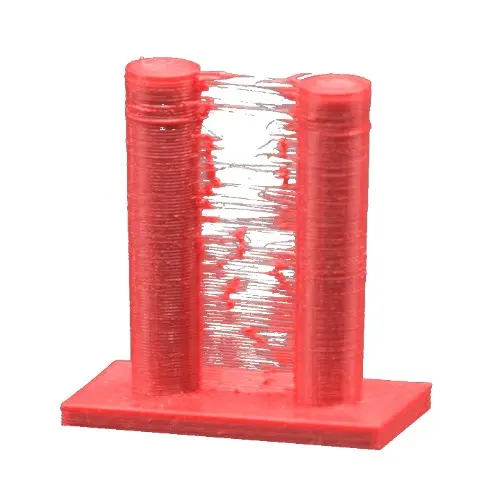Stringing

Stringing
Strining refers to the unwanted tiny filament threads on a 3D printed object. This is usually because the filament drips out of the nozzle when the extruder moves to another location.
When does it occur?
When the extruder moves over an open area, the filament in the nozzle is pulled back for a brief moment to interrupt the flow of material. If all parameters are not aligned, material can still run out of the nozzle. And filaments will form.
Possible solutions:
Hardware:
1. install a powerful fan
If the capacity of the fan is not enough to increase the airflow, a stronger or additional fan can be installed in some devices.
2. dry the filament
Incorrect storage may have caused the filament to draw moisture from the ambient air. Drying the filament can remedy the situation and proper storage will prevent future moisture in the filament.
Software:
3. reduce print temperature
If the print temperature is too high, the fan will not be able to cool the material down quickly enough to prevent it from running out of the nozzle.
4. adjust the fan speed
If the printhead has to make long empty runs, optimal cooling is important to prevent material from running out. Therefore try to increase the fan air speed.
5. increase retraction distance and speed
If there is too much pressure in the nozzle, ergo too much material, the retraction distance should be increased. The speed of retraction can also be helpful in preventing leaking from the nozzle.
6. adjust speed of empty travel
A faster "movement speed" during empty runs of the extruder, decreases the time in which dripping from the nozzle is possible.
7. check flow rate
As a rule, the flow rate in your slicing software should be 100%. If there are threads, there may be an over-extrusion. This means that more material is provided than necessary.
8. adjust line width
Normally the line width should be equal to the nozzle width. However, if you reduce it slightly, this can have a positive effect on the print result.
9. print parts one after the other
To prevent large empty runs, you can print the required parts one after the other, depending on the model.
